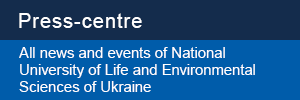Wildfire smoke risks and safety tips
When considering the dangers of wildfires, thoughts of fleeing your home while a raging wildfire rapidly approaches can easily consume your imagination. However, the number one cause of death from fires is smoke inhalation.

Photo: IQAir
Inhaling smoke damages your body by robbing it of oxygen, chemical irritation, or a combination of the two. The inhalation of smoke is particularly dangerous because you may not show symptoms until 24 to 48 hours after exposure. It is estimated that 50 - 80% of fire deaths are from smoke inhalation.
What’s in wildfire smoke?
Wildfire smoke is a mixture of thousands of individual compounds, including harmful particles and gases that pose a severe health risk to anyone (including pets) nearby and downwind from a fire. Wildfire smoke often includes:
- Water vapor, particulate matter, and trace minerals
- Carbon dioxide, carbon monoxide, and nitrogen oxides
- Hydrocarbons and nitrogen oxide (contribute to elevated ozone levels)
- Acrolein and formaldehyde (potent respiratory irritants)
What’s in wildfire smoke depends upon multiple factors, including the types of wood and vegetation burning, the moisture content, the fire temperature, wind conditions and other weather-related influences.
The primary pollutant threatening the health of those nearby and downwind of a wildfire is particulate matter. Wildfire smoke often contains fine and ultrafine particles. These tiny airborne particles are the most dangerous to your health. Fine particles (smaller than 2.5 microns) penetrate deeply into your lungs. The most dangerous are ultrafine particles (smaller than .01 microns), which represent 90% of all airborne particles. These particles are so tiny they can be absorbed directly into your bloodstream. Once in your blood, they can reach any organ or area of your body.
How wildfire smoke behaves?
Many factors affect wildfire smoke behavior, such as weather, geographical terrain, the stage of the fire, and wind. Windy conditions generally cause smoke to mix with larger volumes of air to lower smoke concentrations. However, strong winds also can spread fires more quickly, causing larger fires with greater impact. Regional weather can be the dominant determinant in how a fire behaves as well as how smoke affects surrounding areas.
However, regional weather systems can spread fires quickly and result in large fires with more smoke generated, creating the potential for even greater impacts. Strong regional weather systems can dominate a fire’s behavior for days and be the determining factor of where and how smoke will affect an area.
At-risk populations and wildfire smoke
Most healthy adults will recover from smoke exposure. However, certain individuals are more at-risk for severe health consequences, including:
- Young children. Children whose lungs are still developing are considered more vulnerable, regardless of whether they have a pre-existing condition.
- Pregnant women. Wildfire smoke inhalation puts pregnant women and their unborn children at a higher risk than the general population.
- Older adults. This population is considered to be at-risk due to an increased rate of pre-existing lung and heart diseases.
- Anyone with a respiratory disease. Individuals with emphysema, chronic bronchitis, COPD, asthma or another respiratory disease are at-risk.
- Individuals with a cardiovascular disease. Circulatory diseases include high blood pressure, vascular diseases, heart failure and cerebrovascular conditions. These conditions make sufferers susceptible to heart attacks, transient chest pain, heart failure, stroke, and sudden death from cardiac arrhythmia.
Wildfire smoke preparation and safety tips
Wildfire smoke events can occur seemingly without warning. But there are steps you can take to prepare yourself.
Technical specialists called Air Resource Advisors (ARAs) are responsible for monitoring data and crafting messages for the public. These messages are posted to wildlandfiresmoke.net, along with who you can contact. You can also find smoke impact forecasts and other information for your region.
Tips to limit wildfire smoke exposure
- Remain indoors as much as possible. This tactic is most useful in buildings that effectively stop outdoor air from getting inside. If you need to travel by car to leave or evacuate an area affected by wildfire smoke, use a car air purifier, such as the Atem Car, to help keep your vehicle interior air clean as you pass through smoky or polluted areas.
- Wear a mask outdoors. Only use a respirator mask with an N95, KN95, or N100 rating to help.
- Create a clean air sanctuary inside your home. Wildfire smoke particles and gases can quickly build up inside your home. Keep windows closed and seal off any openings to the outside, including vents. When using an air-conditioner, be sure to set it to re-circulate and close the fresh-air intake. Filter the air, when ventilating the space. A high-performance air purifier for wildfire smoke, such as the IQAir HealthPro Plus, will help remove smoke particles of all sizes from the indoor air. The HealthPro Plus will also help control ozone levels. This is critical if you live in an urban area downwind (even remotely) from wildfires.
- Avoid activities that further pollute the indoor air. Avoid burning candles, using the fireplace, or even vacuuming (unless you own a high-performance HEPA vacuum cleaner). All of these can otherwise become additional sources of indoor air pollutants. Use an air quality monitor, such as the AirVisual Pro, to track levels of indoor pollutants like PM2.5 and CO2 from smoke and other indoor pollution sources. Take action if indoor air pollutants rise to dangerous levels by running an air purifier, circulating fresh air through your HVAC system, or leaving your home temporarily if indoor air becomes unsafe to breathe or your home is threatened by wildfire.
Wildfires are likely to continue increasing in frequency and intensity. Wildfire smoke can negatively affect your health, even if you’re far away from the actual fire. Learn to protect the health of you and your family, and rest assured that you’ve taken the necessary precautions.
Download the AirVisual air quality app
During a wildfire, it’s also important to monitor your local air quality to see how wildfire smoke will affect your outdoor air.
Download the AirVisual air quality app to see real-time hyperlocal data from over 60,000 sensors around the world powered by AirVisual air quality monitors, official government sources such as NASA, and crowdsourced community air quality monitoring organizations.
Track up to six key wildfire pollutants, such as PM2.5, CO2, and NO2, so that you have the best picture of your local air quality during a wildfire and can take action to help protect your health.









